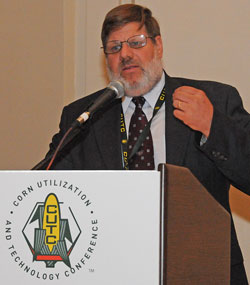This article reprinted with the author’s permission and was first published at
http://www.precisionnutrition.com/.
by Ryan Andrews, June 23rd, 2010.
By now, most PN readers are familiar with Ryan Andrews. Simply put, he’s a nutrition stud.
I’m serious. The guy has earned nearly every nutrition and exercise accreditation available.
• A nationally ranked bodybuilder from 1996-2001, check.
• Registered and Licensed Dietitian, check.
• Certified Strength and Conditioning Coach, check.
• A Masters in Nutrition, check.
• A Masters in Exercise Physiology, check.
• John’s Hopkins trained expert coach, check.
• PN Lean Eating coach, check.
Despite this very impressive resume, I’ve gotta level with you.
Ryan’s CV doesn’t tell the whole story. You see, there’s something more you need to know about Ryan. And that’s his not-so-secret fascination with plant-based foods. In essence, Ryan eats an exclusive plant-based diet. Animal foods are left off his menu. For a variety of reasons.
So, when Ryan called me one day, excitedly announcing an exclusive invitation to visit one of Colorado’s largest cattle farming operations, I was intrigued. A vegan visiting a cattle farm, huh?
Would it be a smooth, fact-finding mission?
Or would I be getting a call to bail the dude outta some local jail?
Well, read on to find out…
________________________________________
My trip to Magnum
My day at the cattle feedlot got off to a rough start. Maybe it’s because I wore my “Have You Hugged A Vegetarian Today Shirt.” Bad move on my part, I guess.
What I didn't wear to the feedlot.
No, I’m just kidding. I didn’t wear my vegan shirt.
And my day at the Magnum Feedyard in Wiggins, Colorado got off to a great start.
It all began at a restaurant in Hudson, Colorado, called the Pepper Pod. That’s where I met two new friends: an animal science instructor and a student from Colorado State University, who escorted me up to Wiggins to get an exclusive tour of the Magnum Feedyard.
We met at the Pepper Pod, then up to Wiggins.
During the 75-minute drive, a lot was going through my mind.
For starters, this visit had been 6 months, and quite a few emails/phone calls, in the making.
You see, very few people in the nutrition world are ever allowed to visit feedlots. In fact, some of my favorite authors have written entire books about feedlots without ever being granted permission to see one in person. So I had to “work it” pretty hard to get this kind of access. And was really excited.
However, despite my enthusiasm for the opportunity, I was a little worried. I mean, everything I’d read about feedlots suggested that they’re horrible, dismal places where thousands of sick cows are crammed in tiny pens, being force-fed corn while standing in steaming piles of their own feces.
As someone concerned with animal welfare, what would I do if faced with this sight? Would I run for the gates, throw them open, and let those poor cows free? Was I man enough to do that? Would I just go home with my tail between my legs? Or would I see something totally different, totally unexpected?
Arriving at Magnum Feedyard
With all these emotional and philosophical thoughts running through my head, I wasn’t prepared for the first thought that hit me when we arrived at Magnum – one of the 14,000 beef cattle operations in Colorado.
“Oh, god, the smell.”
Yes, the first thing I noticed when I arrived was the smell. And no, it wasn’t fear. I smelled manure. I guess I should have expected it. After all, I was standing among 20,000+ steers and heifers. Duh, welcome to farming, Ryan!
The Magnum Farm
In the U.S. there are 2.2 million farms. 98% of them meet the USDA definition of a “family farm.”
The USDA considers a “family farm” any farm where the majority of the business is owned by the operator and his/her relatives. Steve Gabel, president of the Colorado Livestock Association, owns Magnum, and runs it with his family.
So, Magnum fits this criterion and is thus considered a “family farm”.
This is me and Steve Gabel, owner of Magnum.
So if Steve’s is a “family farm,” what’s a “factory farm”?
Well, the term “factory farm” isn’t actually used in the agricultural community. So, in essence, it’s slang that was coined by skeptics of the cattle industry.
The agricultural community actually calls large animal feeding units “CAFOs.” CAFO means Concentrated Animal Feeding Operation. A CAFO has more than 1,000 animal units, and 1 beef cow = 1 animal unit.
For the record, 75% of all beef in the U.S. comes from CAFOs.
And, according to the Environmental Protection Agency, CAFOs “congregate animals, feed, manure and urine, dead animals, and production operations on a small land area. Feed is brought to the animals rather than the animals grazing or otherwise seeking feed in pastures, fields, or on rangeland.”
So, Magnum fits the criterion of a CAFO. When it started in 1993, Magnum had 4,500 cattle. Now they have 22,000. And operations are managed with 8-13 employees (depending on the time of year).
Magnum houses 22,000 cattle
But, wait a minute! Magnum is a family farm. And Magnum is a factory farm. How can it be both?
Well, they were started and are run by a family. But they also congregate more than 22,000 beef cattle. So, they meet the definition for both categories.
Of course, that makes clean and tidy, black and white judgments about cattle operations harder to make. Trust me it’ll get harder in a minute.
What Magnum cattle eat
When animals arrive at Magnum, they are usually 7 – 9 months of age. During their first four days, they receive 100% grass feed to help maintain rumen health.
Wait a second! Don’t all feedlot cattle get 100% corn? With maybe a sprinkling of soy mixed in?
Uh, nope.
There are five different rations used at Magnum, comprised of seven ingredients, including corn, soy, alfalfa, straw, and wet grain distillers (by-products of the ethanol industry). And these feeds range from 0% corn to 50% corn.
Here are a few pics of the different feeds:
A wet distiller, corn-based.
One of the rations is corn-based.
One of the rations is grass-based.
Feed is delivered by a truck three times each day. And, interestingly, as noted above, corn doesn’t comprise more than 50% of any of the feed ration.
Wait, wait. What about all those reports of sick cows being stuffed with corn?
Well, folks, at Magnum anyway, there’s no such thing as an “all grain” cattle diet. In fact, the diet of the cattle at Magnum never exceeds 50% corn. And often, it’s much, much less.
This is the feed truck that makes its rounds three times per day.
This is where all the feed ingredients are mixed in the back of the truck.
As many animal nutrition experts know, too much grain in a cow’s diet can result in rumen acidosis. That is why, at Magnum, the animals’ diets are formulated by nutritionists bi-weekly. This helps them maintain the correct feed for a given pen of animals.
Of course, the goal at Magnum is to feed cattle efficiently. They want the biggest weight gain for the fewest pounds of feed, in the most economical way. And, at Magnum, they do a good job of efficiency. Cattle are normally kept on the feedlot until around 12 to 15 months of age. This means they’re kept for between 150 and 240 days. During this time they gain 500 to 600 pounds.
Per day at Magnum, the cost per head of cattle is $2.10. Grab you pen and paper folks, multiply $2.10 by 22,000 cattle. Lots of money, every day.
Growth-promoting hormones are used in feedlot cattle as it increases efficiency. These are naturally occurring hormones that are regularly metabolized by the body. Most cattle don’t get antibiotics. And if they do, they need it. Further, they won’t be sent to slaughter until 21 days after antibiotic administration, since it takes that long for the antibiotic to clear the system.
Organic feed
According to Magnum, organic feed doesn’t seem to increase meat quality or safety. Research doesn’t really support the idea either. But, organic feed does allow consumers another option (i.e. organic meat vs. non-organic meat). And organic farming practices may have some benefits for the planet.
Of course, in today’s farming climate, less than 1% of American cropland is certified organic. If a lot more was, it would require a lot more composted animal manure. Fortunately, Magnum is on the right track (with composting) if this pattern were to take hold.
Grass-Fed, Free-Range
Sure, some folks think grass-fed, free-range is better. But, as any good PN reader can attest, it’s a heckuva lot more expensive. And, at the end of the day, Magnum is competing for the protein food dollar. Mainstream America is currently buying conventionally fed meat from cattle, so, feedlots keep producing it.
It’s also important to know that if we continue to eat 200+ pounds of meat per person per year in the U.S., grass-fed isn’t really an option. There’s not enough land.
But it would be an option for meat eaters if we reduced overall meat consumption. Is that something our nation is willing to do? Maybe. In time. Right now, however, it doesn’t look like it.
What about E. coli?
E. coli (or Escherichia coli O157:H7) is a natural occurring pathogen in the digestive tract of cattle, but can be minimized through production practices, i.e. clean living conditions.
E. coli serogroups O26, O111, O145, and others have become a public health problem, accounting for 37,000 illnesses and 30 deaths in the U.S. alone.
Among critics of the “factory farm” model, there’s a large concern about E. coli contamination. Many suggest that feeding cattle a high grain-based diet can increase e-coli in the gut. And cross-contamination with meat makes for, not only sick animals, but sick people.
However, there doesn’t seem to be a relationship between feed and harmful E. coli contamination. Indeed, studies reveal no difference in E. coli O157:H7 prevalence or numbers between cattle fed grain vs. grass. And there are no studies that show superiority for one system vs. the other.
So it seems like this concern is more of a cleanliness issue, not a feed issue.
Cattle care
Speaking of cleanliness, Magnum wants the cattle to be clean and comfortable.
I know, I know, I can see my animal welfare comrades shaking their heads – - but think about it. From a profit standpoint, if animals aren’t comfortable, they aren’t going to eat. If they don’t eat, they don’t grow. If they don’t grow, they won’t be much use to the dude wanting to buy a big steak.
Lots of feedlot cattle were males born on dairy farms. You can tell them by their black and white color.
Also, technology is improving the way cattle are treated. Many cattle are tagged with identification and tracked.This tracking allows farmers to know a host of things like: the length of time the cattle have been there, their health history, their previous feed, their current feed needs, their current health, and any notable health or welfare concerns.
Magnum even has guys riding on horses around pens called, well, “pen riders,” who check cattle for problems. An animal nutritionist even comes on site every couple weeks to check how the cattle are feeding. If anything looks out of the ordinary, a session with the vet is likely. Sick animals are taken to a “hospital” pen and given care.
Newsflash: Let’s face it, most people in North America haven’t been to a doctor since their mom took them before high school graduation. Further, most humans acquire “feed” from the Cocoa Puff and Pop-Tart aisle.
My health care is better than yours.
Yes, what I’m trying to say is that Magnum Feedyard cattle receive better health care than many North Americans. They get regular vet appointments and a simple diet that is nutrient dense.
Ok, I think we can all agree the living conditions are debatable. But before you rag on feedlot health care, how do your habits compare?
Waste at Magnum
Magnum recently started composting manure and mortalities (i.e. cattle that don’t make it). It’s gotten more expensive to send deceased cattle to processing plants that manufacture pet foods, so this was the next best option.
Plus it’s more sustainable. And the cattle don’t end up standing around in piles of their own feces. Whew!
The Holiday Inn
Have you ever been to a Holiday Inn? That’s kind of like Magnum. They are a hotel for cattle. Profit increases as occupancy increases.
But there’s a slight difference. Upon checkout from the Holiday Inn you get a free newspaper, a mint, and a shuttle to the airport. When you checkout from Magnum, you get a one way shuttle to the slaughterhouse.
Nearly every week, a truck picks up cattle and transports them to a meat packing plant. This is where cattle are harvested and the carcasses fabricated. It’s important for the cattle to be transported quickly and calmly. The more stressed the animal, the lower the quality the meat.
95% of the steers and heifers from Magnum are sold to two packers, both in Colorado, JBS Swift in Greeley and Cargill Meat Solutions in Fort Morgan. The meat from these cows makes its way nationwide.
Conclusions
I was tired of talking about, reading about, and hearing about feedlots. Especially when many of the accounts were from people who had never been to a feedlot in their lives.
So, when I was given this sort of rare access, I jumped at the chance to check one out for myself.
The sign you see when leaving Magnum.
And, I have to say it. If my experience at Magnum is representative of other cattle farms, all those accounts of the dismal, depressing, disastrous cattle conditions seem to be exaggerated.
No, I’m not going to start eating meat again.
However, if I did eat meat, my visit to Magnum would have made me feel great about eating non-organic, non-grass-fed beef. Seriously. I can’t imagine the quality of meat would be substantially better with organic and grass-fed. Nor can I imagine the living conditions would be substantially better for the cattle.
Now, to be clear, we don’t require meat in our diet. And I don’t think we should be using cows for food, doesn’t matter if the cattle are kept on a feedlot or chilling in a waterbed listening to John Tesh. But that’s my own value system and I’m well aware that 97% of people in the U.S. eat meat on a regular basis.
However, considering the amount we procreate in the U.S. (there’s a birth every 8 seconds and a death every 12 seconds); and the amount of meat we eat (222 pounds per person, per year – not including marine life); and the small amount of money we’re willing to spend on food (we spend 9.6% of our disposable income on food, the lowest in the world. India spends 53%, Venezuela 34%, Italy 26%, Japan 19%, France 16%); feedlots have it right.
People want meat. And Magnum’s feedlot system is dialed in. They’re producing safe and cost-effective meat in, arguably, the most cattle-conscious way (short of opening up those pens and letting them run free). Rock on Magnum.
________________________________________
References
Disposable income spend on food:
http://www.ers.usda.gov/Briefing/CPIFoodAndExpenditures/Data/table7.htm
EPA (2007). “Animal Feeding Operations-NPDES Frequently Asked Questions.” Retrieved May 2, 2010 from
http://cfpub.epa.gov/npdes/faqs.cfm?program_id=7
USDA ERS (2009). “Farm Household Economics and Well-Being: Glossary.” Retrieved May 2, 2010, from
http://www.ers.usda.gov/BRIEFING/WellBeing/glossary.htm
Marler Blog.
Dimitri C & Effland A (2005). Milestones in U.S. Farming and Farm Policy Amber Waves. Washington, D.C., USDA Economic Research Service and USDAERS (2010). Structural Characteristics, for All Farms, by Farm Typology, 2008. Agricultural Resource Management Survey, USDA Economic Research Service.
Mead PS, et al. Food-related illness and death in the United States.
http://www.cdc.gov/ncidod/eid/vol5no5/mead.htm
USDA-National Ag Statistic
12,098,990 out of 16,098,910 are fed in operations greater than 1,000 head, or 75 %. The remaining balance are either grazed or raised on smaller feedlots with capacity under 1,000 head.
_______________________________________
Acknowledgements
Thanks to
Travis Hoffman,
Steve Gabel,
Julie Moore, and Morgan Gaither. Many people in the nutrition world are never allowed to view a feedlot. Travis, Steve, Julie, and Morgan were all very accommodating, and I was treated with the utmost respect.

























 At the recent
At the recent  Posted by Chuck Zimmerman
Posted by Chuck Zimmerman




 It may not be opening night at the Corn Crib but I still had a couple of short interviews to share with you from that night. It was a great game and this bat boy is just one of the thousands of people who enjoyed it. Fans will get to see the team in action at the Corn Crib again this week.
It may not be opening night at the Corn Crib but I still had a couple of short interviews to share with you from that night. It was a great game and this bat boy is just one of the thousands of people who enjoyed it. Fans will get to see the team in action at the Corn Crib again this week.





